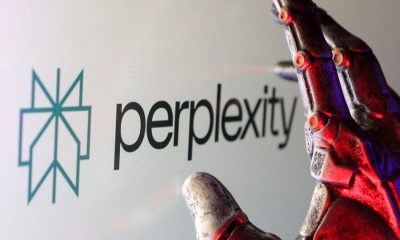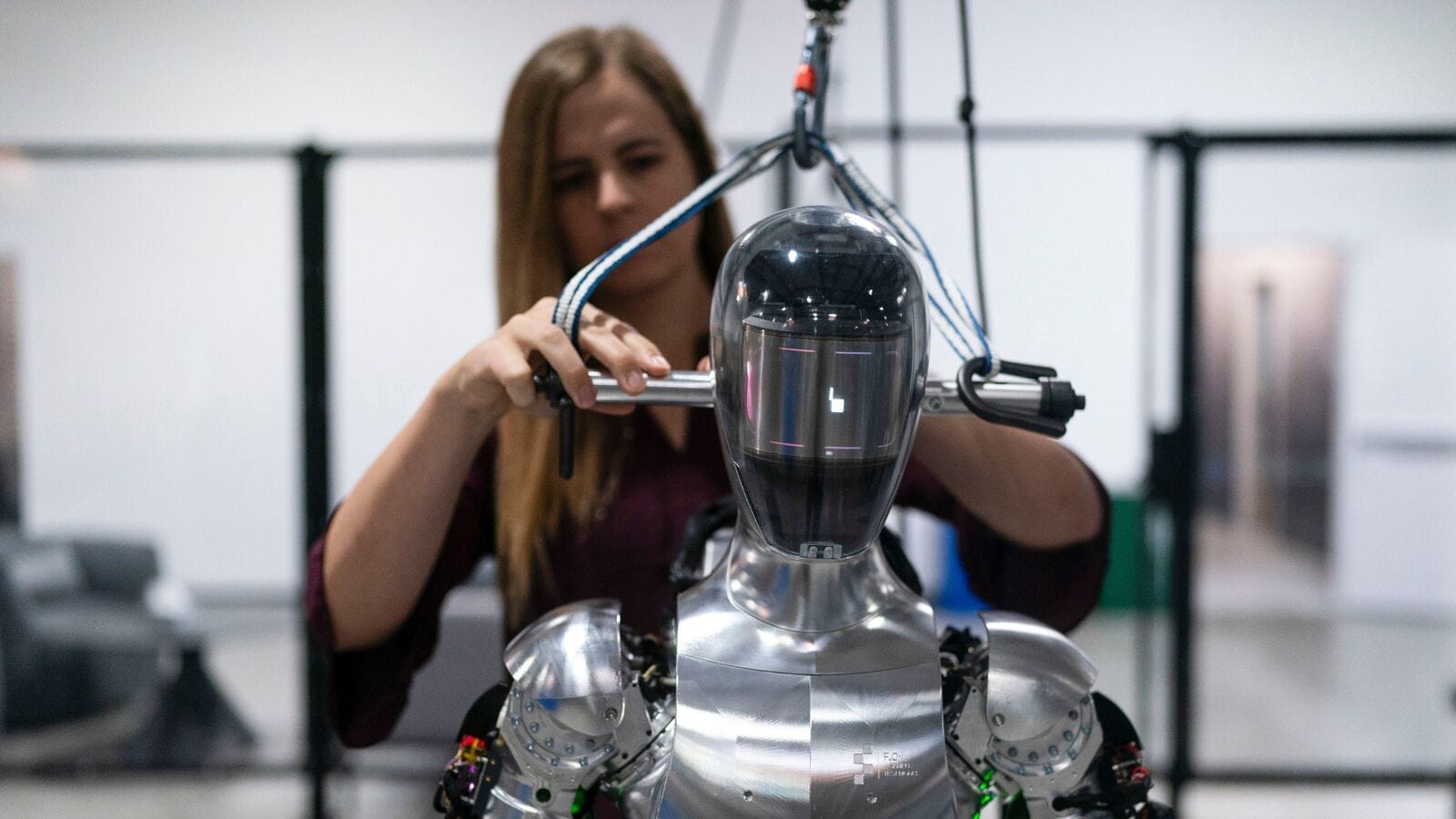
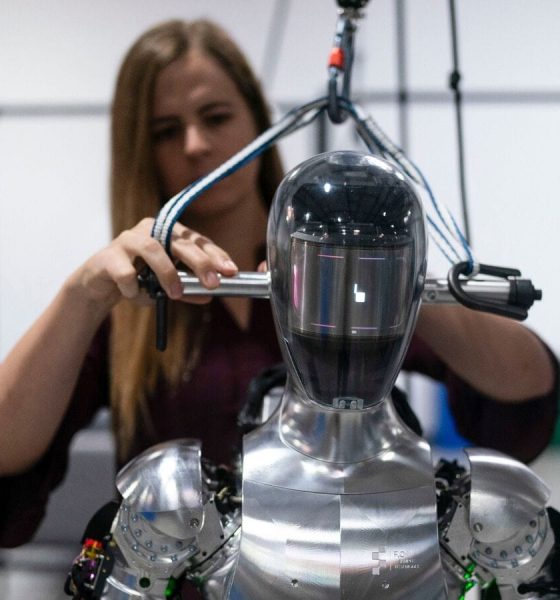
Metaverse
Five artificial intelligence trends to track in 2025 – Crypto News
1. Smarter AI models will intensify AGI fears
“Lata has three apples and buys five more. How many does she have now?” Even a 5-year-old can answer eight. Similarly, GenAI models solve this using ‘chain of thought’ reasoning: “Lata starts with three apples. She buys five more, so 3 + 5 = 8.”
AI can also tackle complex puzzles by employing human-like ‘recursive thinking’, which breaks problems into smaller steps to solve them logically.
Does this mean AI can think and reason like humans? Opinions differ sharply. Prominent voices such as Elon Musk, Masayoshi Son, Geoffrey Hinton and Yoshua Bengio predict machines will soon surpass human thinking, ushering in artificial general intelligence (AGI). Conversely, experts Yann LeCun, Fei-Fei Li, and Andrew Ng argue that AI is far from sentient.
View Full Image
Proponents highlight AI’s benefits such as its contributions to areas like driverless cars, satellite technology, chatbots, and disaster forecasting. Critics warn of risks such as hallucinations, deepfakes, plagiarism, job loss, and the hypothetical threat of AGI surpassing human intelligence.
Deciding who is right isn’t easy, since both sides have excellent credentials. Hinton, Bengio, and LeCun, often called the “Godfathers of AI”, jointly received the 2018 Turing Award, the ‘Nobel Prize for Computing’. LeCun is Meta’s chief scientist. Fei-Fei Li, an AI researcher at Stanford, previously led Google Cloud’s AI efforts. Ng, a pioneer in deep learning, has founded organizations such as DeepLearning.AI and Coursera.
Regardless of which side of the fence you choose to sit on, GenAI models such as Google’s Gemini 2.0, OpenAI’s GPT-4, Anthropic’s Claude 3.5 Sonnet, Elon Musk’s Grok-2, Perplexity, and Microsoft’s Phi-4 continue to impress. The Stanford AI Index, too, acknowledges that AI systems exceed human benchmarks in many areas but notes their limitations in dealing with facts, complex reasoning, and explaining their conclusions.
But concerns persist about unsupervised AI systems performing tasks such as creating audio, images, code, and simulations without full human understanding. Critics fear these models could evolve into uncontrolled entities resembling Skynet from the movie The Terminator.
Some experts are even laying wagers on AGI’s inception. AI sceptic Gary Marcus and AI advocate Miles Brundage have made a 10:1 bet on AI’s progress by 2027. If AI systems can perform eight out of 10 advanced tasks—such as nuanced analysis of movies and novels, writing legal briefs, bug-free coding, solving in-game puzzles, and creating Pulitzer-worthy books or groundbreaking scientific discoveries—Marcus will donate $2,000 to a charity of Brundage’s choice. Otherwise, Brundage will donate $20,000 to Marcus’s chosen charity.
2. AI agentic systems will abound
Imagine a marketing team deploying an AI agent to create an entire ad campaign—researching the target audience, drafting content, and optimizing strategy seamlessly. AI agents can also resolve customer queries, reducing response times and minimizing the need for human intervention. You may think of AI agentic systems as intelligent virtual employees that are capable of autonomous decision-making and action to achieve specific goals without human intervention.

View Full Image
AI systems such as AlphaFold, for instance, have already revolutionized the prediction of protein structures, a cornerstone in drug discovery. Advanced GenAI chatbots can help us independently plan vacations, manage calendars, shop for users, and streamline countless daily tasks.
Indian IT services company Wipro predicts that enterprises will reimagine business processes and value streams with AI Agents this year, following which AI Agents will generate new revenue streams, innovate business processes across industries, and boost profitability, operational efficiency, and customer experience in the coming years. The global AI market, which includes AI agents, is projected to reach $1.8 trillion by 2030. In customer service alone, AI agents are projected to save businesses over $80 billion annually by 2026 through automation.
Yet, AI agents face significant challenges that could stall their momentum. AI agents, for instance, still struggle with multi-step reasoning and reflection. For example, an agent tasked with booking a vacation might secure a flight but fail to align hotel check-in times, leading to inconvenient results. Without more sophisticated reasoning and long-term memory, these agents risk being limited to simple, well-defined tasks. These systems require substantial processing power to complete tasks involving web searches, real-time data analysis, and multi-step operations, making them prohibitively expensive for smaller businesses and individuals, and limiting their broader adoption.
AI agents also raise concerns around ethics and security, adding to the fear of AGI since they work autonomously. Left unchecked, for instance, they could potentially be weaponized to scale phishing attacks, spread misinformation, or exploit cybersecurity vulnerabilities. An AI agent managing stock trades, for instance, could misinterpret market signals or act on incomplete data, leading to catastrophic financial losses. Until these systems consistently demonstrate accuracy and dependability, widespread trust will remain elusive.
3. India will back its AI ambitions with robust infrastructure
The Union Cabinet’s $1 billion allocation for the IndiaAI Mission and approval of four semiconductor projects signal India’s ambition to reduce electronic imports and establish itself on the global AI and semiconductor stage. While India lags behind the US and China, which have invested heavily in semiconductors and AI startups, the ₹1.5 trillion worth of projects aim to bolster the country’s microchip-making ecosystem, focusing on design, fabrication, assembly, and testing.
Tata Electronics’ semiconductor plant, which is under construction in Assam, is expected to start producing ‘Made in India’ chips by 2026 and export them to multiple countries for use in the automobile and telecom sectors.

View Full Image
Though the approved 28-40 nanometre (nm) fabs won’t enable cutting-edge AI chips (sub-5nm), the ₹10,371.92 crore allocated to the national AI mission will boost computing capacity, support local AI models, and promote AI startups. India plans to secure 10,000 or more graphics processing units (GPU) through public-private partnerships to overcome their scarcity—GPUs are critical in training AI models. Additionally, the IndiaAI Innovation Centre will focus on developing indigenous large multimodal models (LMMs) and domain-specific AI applications, addressing a current gap in India’s AI ecosystem.
However, India’s LMM landscape remains underdeveloped, with only a handful of models, such as Sarvam AI’s OpenHathi and CoRover.ai’s BharatGPT. In comparison, China boasts over 130 language models. Many of India’s 22 official languages lack sufficient digital data, which the proposed IndiaAI Datasets Platform aims to address by offering quality non-personal datasets to startups and researchers.
On the semiconductor front, India’s agreements with Singapore, the US, and the European Union demonstrate its commitment to reshaping the global semiconductor supply chain, which is currently dominated by the US, China, South Korea, Vietnam, and Taiwan. These efforts aim to reduce dependency on imports for components vital to AI applications, electronics, and electric vehicles. India also boasts a strong talent pool of over 2,000 semiconductor chip design engineers and houses R&D centres for major global companies, including Intel, Nvidia, AMD, and Qualcomm.
India’s LMM landscape remains underdeveloped, with only a handful of models, such as Sarvam AI’s OpenHaathi and CoRover.ai’s BharatGPT.
The country is also setting its sights on becoming a global data centre hub. India currently has about 150 data centres, with major players such as Amazon Web Services, Microsoft Azure, and Google Cloud rapidly expanding their capacities. Rising AI adoption, 5G rollouts, data localization mandates, and the growing demand for edge computing are driving this expansion. However, India accounts for only 3% of global data centre capacity despite holding 20% of global data.
Crisil Ratings projects the Indian data centre industry will double its capacity to 2-2.3 gigawatts (GW) by FY27. JLL India anticipates a 604 MW increase, while Icra forecasts operational capacity will surpass 2,000 MW by FY27, backed by investments of ₹50,000-55,000 crore. Astute Analytica estimates India’s data centre market will reach $21.87 billion by 2032.
But, to meet projected mobile data traffic of 33-35 GB per month by 2026, India needs an additional 3.6 MW of installed capacity by 2028 to match China’s benchmarks. Reliable power, too, remains a challenge. Further, 95% of data centre capacity is concentrated in metros, with Mumbai contributing over 50%. To diversify, companies are investing in smaller cities such as Pune and Vizag, leveraging lower costs and improved infrastructure.
4. We will see more humanoid robots
If you’re a visitor seeking information on robotics or mechatronics courses at the Krishna Institute of Engineering and Technology (KIET) in Uttar Pradesh, you may encounter ‘Anushka’—an AI-powered humanoid receptionist. Built for under ₹2.5 lakh using components, including recycled parts from the campus, Anushka lacks the sophistication of high-end robots such as Sophia but compensates with practical features. She uses wheels to move around, employs computer vision for facial recognition, can control lights, make automated calls, and learn through reinforcement learning like humans.

View Full Image
India has seen a surge in humanoid robot development, with examples including Anushka, Manav, Shalu, HDFC’s IRA, and airport assistance robot RADA. While many projects remain prototypes, others such as Mitra and Mitri focus on healthcare and senior care. Mitra’s business model includes renting these robots to generate revenue alongside the core focus on healthcare solutions.
India’s contributions, such as Vyommitra, a humanoid astronaut launching into space, also highlight its growing ambitions. Ahmedabad-based Kody Technolab’s Skanda and Reliance-backed Addverb, too, are advancing robotics. Addverb’s upcoming humanoid robot, powered by AI and 5G, promises versatile functionality, including parcel handling, quality inspection, and disaster relief, aiming to eliminate ‘3D’ (Dull, Dirty, Dangerous) jobs.
Globally, Samsung Electronics has ramped up its investment in Rainbow Robotics, a prominent South Korean robotics company. OpenAI, too, is reportedly developing its own line of humanoid robots, following the success of Figure’s robots, which OpenAI supports and which are now used at BMW’s South Carolina assembly plant. Microsoft, too, has partnered with Sanctuary AI in Vancouver to advance general-purpose humanoid robots. Meanwhile, Nvidia is designing specialized chips for humanoid robots, and China’s automaker BYD plans to launch its own humanoid robots.

View Full Image
India’s robotics industry is expanding rapidly, with robot installations growing 59% in 2023 to 8,510 units, primarily driven by the automotive sector. Globally, China leads in robot installations, followed by Japan and the US Humanoids will add to the numbers even as challenges persist. Humanoid robots with legs, for instance, are more capable but costly, and their battery life, privacy concerns, and efficiency lag behind human capabilities. High costs and cheaper human labour in markets like India also hinder widespread adoption. That said, Mitra has partnered with the University of Maryland to use its humanoid with a non-invasive brain-computer interface (BCI) to help paralytic patients overcome daily challenges, such as grabbing a bottle of water. Innovations such as these suggest a promising future awaits humanoid robotics.
5. AI cyberattacks will continue to rattle India Inc.
AI and quantum computing are poised to reshape the world’s cyber resilience. On the one hand, enterprises are increasingly using AI-driven cybersecurity for real-time analysis, pattern recognition, and predictive defence against threats such as deepfakes, social engineering, data poisoning, and AI model theft. On the other hand, there is a proportional rise in sophisticated GenAI-enhanced cyberattacks. Nearly 97% of the companies recently surveyed by the Capgemini Research Institute said they have encountered breaches or security issues related to the use of GenAI in the past year. With remote work, companies have become more vulnerable.

View Full Image
AI tools like ChatGPT, Kaspersky warns, can generate malicious software, automate mass attacks, and log smartphone inputs via sensor data to steal sensitive information. Kaspersky’s research into password cracking revealed that 32% of user passwords can be broken with brute force and a GPU in under an hour, while AI-trained models cracked 78% of passwords three times faster.
Tools like ChatGPT-4o create sophisticated phishing messages, bypassing language barriers and mimicking individual writing styles, according to Kaspersky. Deepfakes add another layer of threat, enabling scams like impersonations and fraudulent money requests. Notable cases include a $25 million theft in Hong Kong using deepfake video calls. As AI integration deepens with tools like Apple Intelligence and Google Gemini, addressing these vulnerabilities is vital.
Security companies advocate the use of tools like instant document verification, GST validation, and AI-powered entity screening to enable early detection of risks.
-

 Blockchain1 week ago
Blockchain1 week agoAfrica Countries Pass Crypto Laws to Attract Industry – Crypto News
-
others1 week ago
JPY soft and underperforming G10 in quiet trade – Scotiabank – Crypto News
-

 Blockchain1 week ago
Blockchain1 week agoXRP Price Gains Traction — Buyers Pile In Ahead Of Key Technical Breakout – Crypto News
-

 Blockchain1 week ago
Blockchain1 week agoISM Data Hints Bitcoin Cycle Could Last Longer Than Usual – Crypto News
-

 Technology1 week ago
Technology1 week agoNothing OS 4.0 Beta introduces pre-installed apps to Phone (3a) series: Co-founder Akis Evangelidis explains the update – Crypto News
-

 Technology6 days ago
Technology6 days agoSam Altman says OpenAI is developing a ‘legitimate AI researcher’ by 2028 that can discover new science on its own – Crypto News
-

 Cryptocurrency1 week ago
Cryptocurrency1 week agoTrump plans to pick Michael Selig to lead CFTC: Report – Crypto News
-

 Blockchain1 week ago
Blockchain1 week agoEthereum Rebounds From Bull Market Support: Can It Conquer The ‘Golden Pocket’ Next? – Crypto News
-

 De-fi1 week ago
De-fi1 week agoNearly Half of US Retail Crypto Holders Haven’t Earned Yield: MoreMarkets – Crypto News
-

 Cryptocurrency1 week ago
Cryptocurrency1 week agoWestern Union eyes stablecoin rails in pursuit of a ‘super app’ vision – Crypto News
-

 Cryptocurrency1 week ago
Cryptocurrency1 week agoBitcoin’s institutional surge widens trillion-dollar gap with altcoins – Crypto News
-

 Technology1 week ago
Technology1 week agoUniswap Foundation (UNI) awards Brevis $9M grant to accelerate V4 adoption – Crypto News
-

 Blockchain1 week ago
Blockchain1 week agoBinance Stablecoin Outflow On A Steady Rise — What This Means For The Market – Crypto News
-
others1 week ago
Indian Court Declares XRP as Property in WazirX Hack Case – Crypto News
-

 Technology1 week ago
Technology1 week agoFrom Studio smoke to golden hour: How to create stunning AI portraits with Google Gemini – 16 viral prompts – Crypto News
-
Business1 week ago
PEPE Coin Price Prediction as Weekly Outflows Hit $17M – Is Rebound Ahead? – Crypto News
-

 Cryptocurrency1 week ago
Cryptocurrency1 week agoHYPE Breaks Out After Robinhood Listing and S-1 Filing: What’s Next? – Crypto News
-

 De-fi1 week ago
De-fi1 week agoHYPE Jumps 10% as Robinhood Announces Spot Listing – Crypto News
-
others1 week ago
Platinum price recovers from setback – Commerzbank – Crypto News
-
Business1 week ago
White House Crypto Czar Backs Michael Selig as ‘Excellent Choice’ To Lead CFTC – Crypto News
-
others1 week ago
Bitcoin Price Eyes $120K Ahead of FED’s 98.3% Likelihood to Cut Rates – Crypto News
-

 Technology1 week ago
Technology1 week agoMint Explainer | India’s draft AI rules and how they could affect creators, social media platforms – Crypto News
-
others1 week ago
GBP/USD holds steady after UK data, US inflation fuels rate cut bets – Crypto News
-

 Blockchain1 week ago
Blockchain1 week agoEntire Startup Lifecycle to Move Onchain – Crypto News
-

 De-fi1 week ago
De-fi1 week agoNearly Half of US Retail Crypto Holders Haven’t Earned Yield: MoreMarkets – Crypto News
-

 Blockchain1 week ago
Blockchain1 week agoXRP/BTC Retests 6-Year Breakout Trendline, Analyst Calls For Decoupling – Crypto News
-

 Cryptocurrency1 week ago
Cryptocurrency1 week agoUSDJPY Forecast: The Dollar’s Winning Streak Why New Highs Could Be At Hand – Crypto News
-
others1 week ago
Is Changpeng “CZ” Zhao Returning To Binance? Probably Not – Crypto News
-
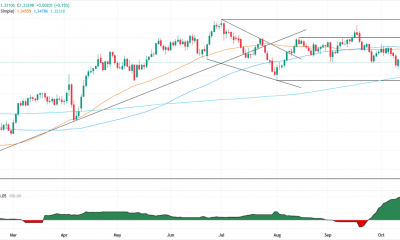
 others1 week ago
others1 week agoGBP/USD floats around 1.3320 as softer US CPI reinforces Fed cut bets – Crypto News
-

 Metaverse1 week ago
Metaverse1 week agoGemini in Gmail automates meeting schedules effortlessly – Crypto News
-

 Cryptocurrency1 week ago
Cryptocurrency1 week agoNEAR’s inflation reduction vote fails pass threshold, but it may still be implemented – Crypto News
-
Technology1 week ago
Ethereum Supercycle Strengthens as SharpLink Gaming Withdraws $78.3M in ETH – Crypto News
-
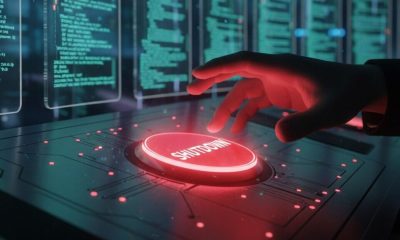
 Technology1 week ago
Technology1 week agoSurvival instinct? New study says some leading AI models won’t let themselves be shut down – Crypto News
-

 De-fi1 week ago
De-fi1 week agoMetaMask Fuels Airdrop Buzz With Token Claim Domain Registration – Crypto News
-

 Cryptocurrency6 days ago
Cryptocurrency6 days agoCitigroup and Coinbase partner to expand digital-asset payment capabilities – Crypto News
-

 Cryptocurrency6 days ago
Cryptocurrency6 days agoInside Bitwise’s milestone solana ETF launch – Crypto News
-

 Cryptocurrency6 days ago
Cryptocurrency6 days agoWhy Is Pi Network’s (PI) Price Up by Double Digits Today? – Crypto News
-

 Blockchain1 week ago
Blockchain1 week agoPump.Fun Rallies 10% After Acquisition Of Trading Terminal Padre – Crypto News
-
Technology1 week ago
Analyst Eyes Key Support Retest Before a Rebound for Ethereum Price Amid $93M ETF Outflows and BlackRock Dump – Crypto News
-
Business1 week ago
Ripple Explores New XRP Use Cases as Brad Garlinghouse Reaffirms Token’s ‘Central’ Role – Crypto News
-
others1 week ago
Tether’s Stablecoin 1.0 Era Is Over – Now the Industry Needs 2.0 – Crypto News
-

 De-fi1 week ago
De-fi1 week agoAave Labs Acquires Stable Finance to Expand DeFi Access – Crypto News
-

 Blockchain1 week ago
Blockchain1 week agoKyrgyzstan Launches Stablecoin While Confirming Future CBDC – Crypto News
-
others1 week ago
USD/JPY extends gains as strong US PMI offsets softer CPI data – Crypto News
-
Technology1 week ago
James Wynn Takes XRP Long Bet After Ripple Prime Announcement – Crypto News
-

 Cryptocurrency1 week ago
Cryptocurrency1 week agoCrypto wrap: Bitcoin, Ethereum, BNB, Solana, and XRP muted after CPI report – Crypto News
-

 Cryptocurrency1 week ago
Cryptocurrency1 week agoBitcoin Accumulation Patterns Show Late-Stage Cycle Maturity, Not Definite End: CryptoQuant – Crypto News
-

 De-fi1 week ago
De-fi1 week agoNearly Half of US Retail Crypto Holders Haven’t Earned Yield: MoreMarkets – Crypto News
-

 Blockchain1 week ago
Blockchain1 week agoBig Iran Bank Goes Bankrupt, Affecting 42 Million Customers – Crypto News
-

 Technology1 week ago
Technology1 week agoMicrosoft ‘tricked users into pricier AI-linked 365 plans,’ says Australian watchdog; files lawsuit – Crypto News

















